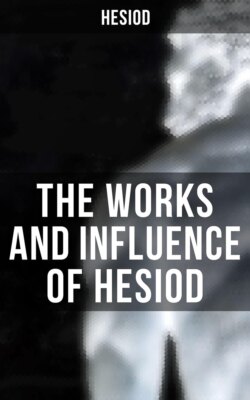Читать книгу The Works and Influence of Hesiod - Hesiod - Страница 8
На сайте Литреса книга снята с продажи.
I. “The Works and Days”
ОглавлениеThe poem consists of four main sections. (a) After the prelude, which Pausanias failed to find in the ancient copy engraved on lead seen by him on Mt. Helicon, comes a general exhortation to industry. It begins with the allegory of the two Strifes, who stand for wholesome Emulation and Quarrelsomeness respectively. Then by means of the Myth of Pandora the poet shows how evil and the need for work first arose, and goes on to describe the Five Ages of the World, tracing the gradual increase in evil, and emphasizing the present miserable condition of the world, a condition in which struggle is inevitable. Next, after the Fable of the Hawk and Nightingale, which serves as a condemnation of violence and injustice, the poet passes on to contrast the blessing which Righteousness brings to a nation, and the punishment which Heaven sends down upon the violent, and the section concludes with a series of precepts on industry and prudent conduct generally. (b) The second section shows how a man may escape want and misery by industry and care both in agriculture and in trading by sea. Neither subject, it should be carefully noted, is treated in any way comprehensively. (c) The third part is occupied with miscellaneous precepts relating mostly to actions of domestic and everyday life and conduct which have little or no connection with one another. (d) The final section is taken up with a series of notices on the days of the month which are favourable or unfavourable for agricultural and other operations.
It is from the second and fourth sections that the poem takes its name. At first sight such a work seems to be a miscellany of myths, technical advice, moral precepts, and folklore maxims without any unifying principle; and critics have readily taken the view that the whole is a canto of fragments or short poems worked up by a redactor. Very probably Hesiod used much material of a far older date, just as Shakespeare used the Gesta Romanorum, old chronicles, and old plays; but close inspection will show that the Works and Days has a real unity and that the picturesque title is somewhat misleading. The poem has properly no technical object at all, but is moral: its real aim is to show men how best to live in a difficult world. So viewed the four seemingly independent sections will be found to be linked together in a real bond of unity. Such a connection between the first and second sections is easily seen, but the links between these and the third and fourth are no less real: to make life go tolerably smoothly it is most important to be just and to know how to win a livelihood; but happiness also largely depends on prudence and care both in social and home life as well, and not least on avoidance of actions which offend supernatural powers and bring ill-luck. And finally, if your industry is to be fruitful, you must know what days are suitable for various kinds of work. This moral aim—as opposed to the currently accepted technical aim of the poem—explains the otherwise puzzling incompleteness of the instructions on farming and seafaring.
Of the Hesiodic poems similar in character to the Works and Days, only the scantiest fragments survive. One at least of these, the Divination by Birds, was, as we know from Proclus, attached to the end of the Works until it was rejected by Apollonius Rhodius: doubtless it continued the same theme of how to live, showing how man can avoid disasters by attending to the omens to be drawn from birds. It is possible that the Astronomy or Astrology (as Plutarch calls it) was in turn appended to the Divination. It certainly gave some account of the principal constellations, their dates of rising and setting, and the legends connected with them, and probably showed how these influenced human affairs or might be used as guides. The Precepts of Chiron was a didactic poem made up of moral and practical precepts, resembling the gnomic sections of the Works and Days, addressed by the Centaur Chiron to his pupil Achilles. Even less is known of the poem called the Great Works: the title implies that it was similar in subject to the second section of the Works and Days, but longer. Possible references in Roman writers 1106 indicate that among the subjects dealt with were the cultivation of the vine and olive and various herbs. The inclusion of the judgment of Rhadamanthys (frag. 1): “If a man sow evil, he shall reap evil,” indicates a gnomic element, and the note by Proclus 1107 on Works and Days 126 makes it likely that metals also were dealt with. It is therefore possible that another lost poem, the Idaean Dactyls, which dealt with the discovery of metals and their working, was appended to, or even was a part of the Great Works, just as the Divination by Birds was appended to the Works and Days.
